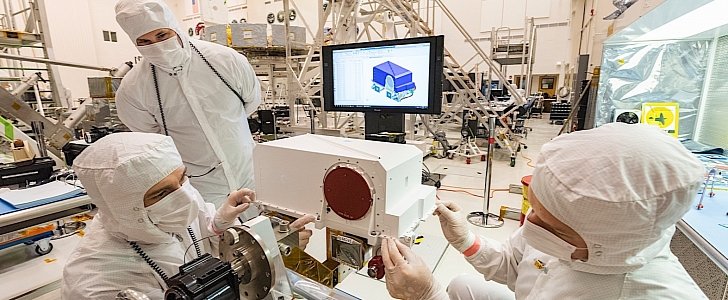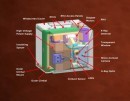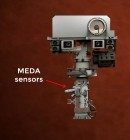As the launch date for the Mars 2020 mission approaches, efforts to get the rover ready for the task ahead are accelerating. The machine is currently in the final assembly stages, and all its pieces are beginning to fall into place.
Earlier in May, the rover was fitted with two Mastcam-Z high-definition cameras, which it will use to navigate around the Red Planet and give Earth-based scientists an in-depth look at what’s out there.
The Mastcam-Z is a panoramic and stereoscopic camera that will be used to determine the mineralogy of the Martian surface and assist with rover operations ranging from driving to core-sampling.
For people on Earth, the camera will allow a better understanding of the “textural, mineralogical, structural and morphologic details in rocks and sediment at any location within the rover's field of view.”
That’s possible because this camera is the first humans have sent to Mars that has the capability to zoom and generate 3D images at “unprecedented resolution."
"With a resolution of three-hundredths of an inch (0.8 millimeters) in front of the rover and less than one-and-a-half inches [38 millimeters] from over 330 feet (100 meters) away - Mastcam-Z images will play a key role in selecting the best possible samples to return from Jezero Crater." said in a statement Jim Bell, the man in charge with the Mastcam-Z.
In all, the 2020 rover is equipped with seven tools designed specifically for its mission (you can read all about them here). Another camera system, SuperCam, will provide data on the presence of organic compounds.
The Mars 2020 mission will take off next year aided by an Atlas V rocket. It will land in February 2021 in the Jezero Crater on the western edge of Isidis Planitia. It is the most important mission ever sent to Mars, as it will attempt, for the first time, to produce oxygen from Martian atmospheric carbon dioxide.
The Mastcam-Z is a panoramic and stereoscopic camera that will be used to determine the mineralogy of the Martian surface and assist with rover operations ranging from driving to core-sampling.
For people on Earth, the camera will allow a better understanding of the “textural, mineralogical, structural and morphologic details in rocks and sediment at any location within the rover's field of view.”
That’s possible because this camera is the first humans have sent to Mars that has the capability to zoom and generate 3D images at “unprecedented resolution."
"With a resolution of three-hundredths of an inch (0.8 millimeters) in front of the rover and less than one-and-a-half inches [38 millimeters] from over 330 feet (100 meters) away - Mastcam-Z images will play a key role in selecting the best possible samples to return from Jezero Crater." said in a statement Jim Bell, the man in charge with the Mastcam-Z.
In all, the 2020 rover is equipped with seven tools designed specifically for its mission (you can read all about them here). Another camera system, SuperCam, will provide data on the presence of organic compounds.
The Mars 2020 mission will take off next year aided by an Atlas V rocket. It will land in February 2021 in the Jezero Crater on the western edge of Isidis Planitia. It is the most important mission ever sent to Mars, as it will attempt, for the first time, to produce oxygen from Martian atmospheric carbon dioxide.












